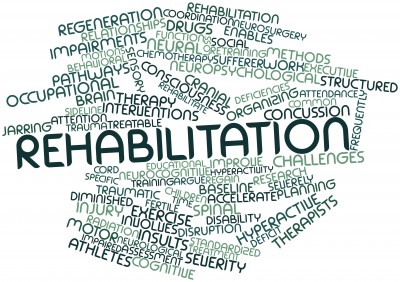If you lost the wealth of your brain’s services to you …
God forbid! as my friend Judy would say, with a tone of voice and look that will dispel dire misfortune now and forever.
… If you or your sister or your partner or child lost some of their brain’s services, what would you want of hospitals, doctors, allied health professionals and health agencies? What would you want of rehabilitation?
You might think the professionals are equipped with all the right expertise, and decisions would flow from there.
If only it were that simple.
Latrobe University researchers in conjunction with the Alfred Hospital hired Annie Bolitho & Associates to design and facilitate a citizens’ jury on brain injury in October 2014. A report drawing together the work of the jury has recently been released.
This diagram from an expert witness presentation by Dr Kate Laver (Flinders University) highlights the complex mix of inputs to the rehabilitation process.

Kate Laver: on rehabilitation
Citizens’ juries are a terrific methodology when it is essential to take values into account. Personal values. Values we hold or might hold as communities and societies.
“On a subject like brain injury where there’s so many known unknowns, and unknown unknowns, there’s ONE truth that can bear re-stating here: that brain injury – like other disabilities – tracks social-locational disadvantage. Those people at the greatest risk of a brain injury are drawn from exactly the same populations as those at risk of ANY injury – from backgrounds of low income, low levels of education, high levels of unemployment, poor housing and so on. This might bring it home: half of my hometown Sydney, half of its metropolitan area’s young, risk-taking, severe traumatic brain injuries – the motor vehicle accidents, the assaults – HALF occur between the, what, longitudes of Parramatta and Penrith.”
This information drew out a social values discussion in the jury. ‘What does this evidence mean for us as a society?’ ‘What if this reality could be changed, ameliorated?’ ‘How could education about risks best be targeted?’ The outcome of their discussion was to recommend public education, especially to young at risk males.
The
ABI Citizens’ Jury Report_20012015 outlines more about this interesting case study for citizen juries and health. The researchers would appreciate it if you let them know if the report is useful to you.

Jurors present recommendations to stakeholders (Brain Injury Citizens’ Jury)



